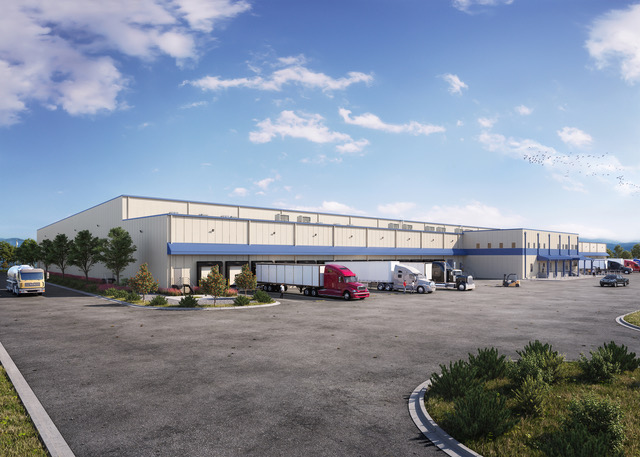Americold, the largest player, managed to recover increased costs, but food production has yet to return to normal.
The COVID-19 pandemic prompted a reshuffling of the national workforce, and continuing waves of the virus have left many employers in the United States dealing with chronic absenteeism problems. The temperature-controlled logistics industry faces a double whammy when it comes to labor management: with their own workforces and with those of their customers in the food industry.
Americold, the largest TCL player in North America, was staffed with around 70% permanent employees versus 30% temporary employees prior to mid-2021. By the end of last year, that ratio stood at around 60:40. In the first quarter of 2022, Americold managed to bump the proportion of permanent employees up to 65%, but that was still well below the company’s preferred ratio of 80%.
“While relying on temporary labor during 2021, we were less productive and less efficient, and we know it negatively impacted customer service,” said Americold’s CEO George Chappelle. “I do not think this is an Americold specific issue. I believe this impacted all companies in the services industry that are dependent on skilled labor.”
Americold’s customers in the food industry are also experiencing labor problems, which means that they “are producing less,” said Chappelle, despite strong consumer demand for their products. Fill rates at the retail level have plummeted to as low as 70% in an industry where 98.5% is the usual benchmark.
“End-consumer demand for temperature-controlled food remains strong,” said Chappelle, “but COVID-related supply chain and labor disruptions continue to impact the global food supply chain.”
During the first months of 2022, Americold’s customers faced production problems as COVID’s Omicron variant infected many workers. But even after Omicron receded, the labor market remained challenged, straining the ability of the food-service industry to produce at pre-COVID levels.
“All the customers I’ve talked to have said they’re operating inefficiently,” said Chappelle. “When you don’t have the right amount of staffing in your facility, you can’t operate normally.” Pre-pandemic, the food industry tended to stock the pipeline with four to six weeks of inventory, according to Chappelle, which is “not a ton. It wasn’t like inventories were bloated to begin with.”
Next to labor costs, power represents Americold’s second largest expense. During the first quarter of 2022, the company’s power costs increased by 18% year-over-year, with increases seen in Europe more so than in North America thanks to energy-cost increases brought about by the war in Ukraine. To address that, the company has implemented utility surcharges on customers at impacted facilities.

Warehouse Revenue Rises
The company has also moved to increase rents and storage fees. Around 30% of Americold’s warehouse revenue comes from smaller customers, where pricing can be adjusted with a 30-day to 45-day notice, while 70% comes from its top 100 customers. Among those, half the contracts allow Americold to adjust pricing when it can demonstrate that cost increases have persisted for over 60 days. The other half of the top-100 contracts require good-faith negotiations to increase prices.
As a result of its price increases, Americold’s warehousing revenue during the first quarter of this year increased by 11.2%, compared to a growth rate of 0.3% in the fourth quarter of 2021, and the company also managed to grow its business with 80% of its top-25 customers during the quarter. Warehouse net operating income for the first quarter showed an increase of 0.1%, versus a decline of 5.8% in the previous quarter, which suggests that Americold in recent months has successfully recovered its cost increases from customers through the imposition or negotiation of price increases.
For the industry to revert to its normal levels, food production companies will have to ramp up production, and for that to happen, they will have to find a solution to their labor problems. But such a solution remains elusive.
“I don’t know of a way they can ramp up production without people,” said Marc Smernoff, Americold’s chief financial officer. “They will have to find a way to get labor. You’ve seen some pretty creative programs being developed by some of the largest companies in America. Ultimately, I think they will attract people back to that industry and produce at pre-COVID levels, if not higher, to capture as much incremental demand as they can.”
But, Smernoff added, “we can’t predict when the food industry recovers to pre-COVID production levels.”
Americold has itself implemented several initiatives in an effort to attract new permanent employees and to increase retention. The company runs job fairs “literally every week and sometimes every day of every week,” said Smernoff. “We’re converting temporary employees to permanent employees when they want to join Americold. We revised hiring practices so we can hire on the spot and have implemented second-chance programs to attract people that maybe we wouldn’t have recruited as aggressively as in the past. We’ve created part-time positions where before we really weren’t interested in part-time labor. We’re doing everything we can and we’re doing it every day.”
Normal?
The labor shortage seen in the industry and in the economy has naturally led to increased labor costs, a phenomenon that won’t be going away in the foreseeable future, according to Chappelle. “I don’t see labor rates reducing,” he said. “I don’t see that ever happening.”
Nor can he foresee when the food industry, and, by extension, the cold-storage industry, will get back to normal. “We really haven’t set a time frame because we really can’t say when the labor force will show up and get back to work in the food industry,” he said. “I think everybody in the food industry is surprised that it’s gone this long. We would have expected the workforce that was there two years ago to be back by now. It’s not.”
At the same time, Chappelle is “very confident” the industry will eventually recover. “There’s unmet consumer demand,” he said, “which is really what every food manufacturer wants to satisfy.”




